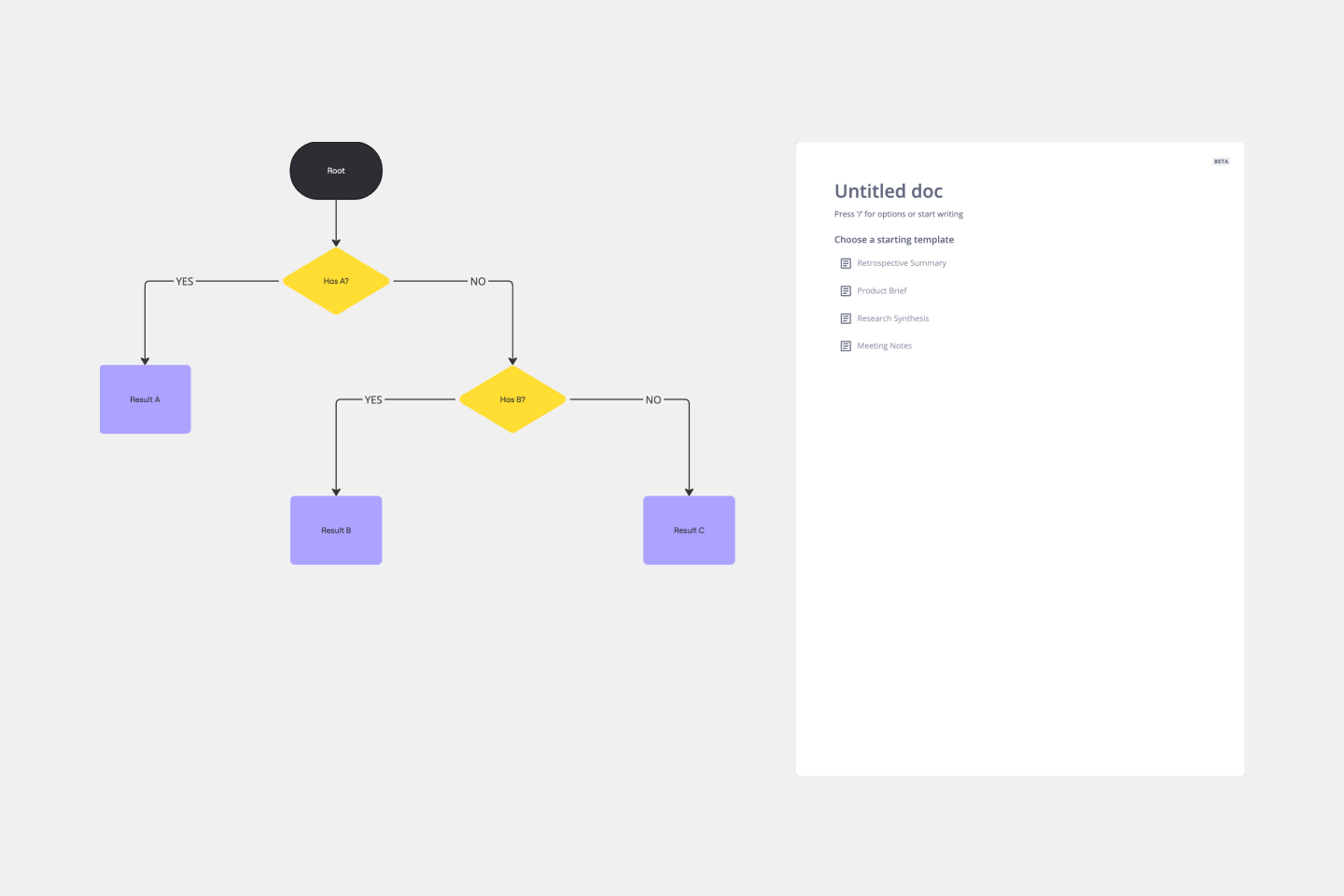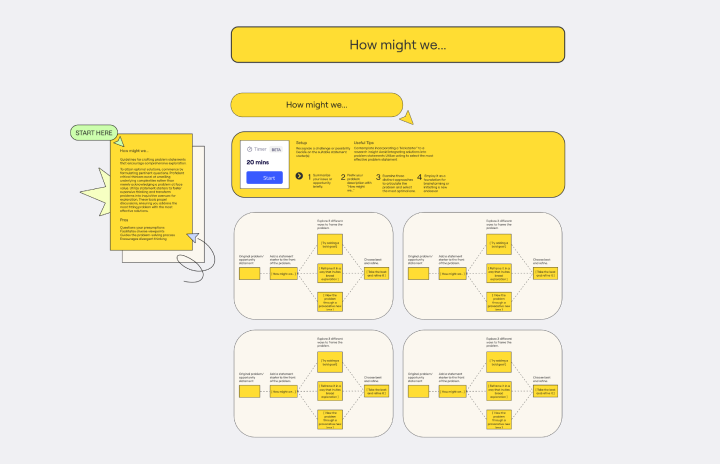5 Whys Analysis
Guidelines for the 5 Whys Analysis
Step 1: Form a problem statement
5 min
Ask your team (if you are not doing it alone) what problem you're about to analyze. Put responses on digital sticky notes.
Be ready for intentional and unintentional bias in the answers you discuss here. Make sure the room doesn't try to steer away from an uncomfortable truth, or try to reach an easy consensus.
If there isn't one clear problem, you'll need to agree on which problem to work on—which on its own should be pretty revealing! Once you've agreed, write the succinct problem statement on the board, using another color of sticky notes or text.
Step 2: Basic 5 whys analysis
15 min
Ask the questions: "Why is / are / does [your problem statement]?" Write your answer(s) below the problem statement. These become your second problem statement.
Ask again: "Why is / are / does [your second problem statement]?" Write those responses below the second row.
You get the idea. Keep going until you've asked "why" five or more times, even if it feels awkward and facetious. Most of the time we don't think hard enough about the factors behind problems, so keep pushing until you feel like you're at the root of the problem.
Step 3: Further analyze the root cause
10 min
You've got a good understanding of the problem by this point. Now it's time to pick it apart.
As a team, discuss your line of reasoning. Odds are, you've traced an acute problem to a much larger problem space, or a much harder problem to tackle. Listen carefully between the lines in your team's discussion—make sure all are agreed that you've locked onto the right problem.
Categories
Similar templates








